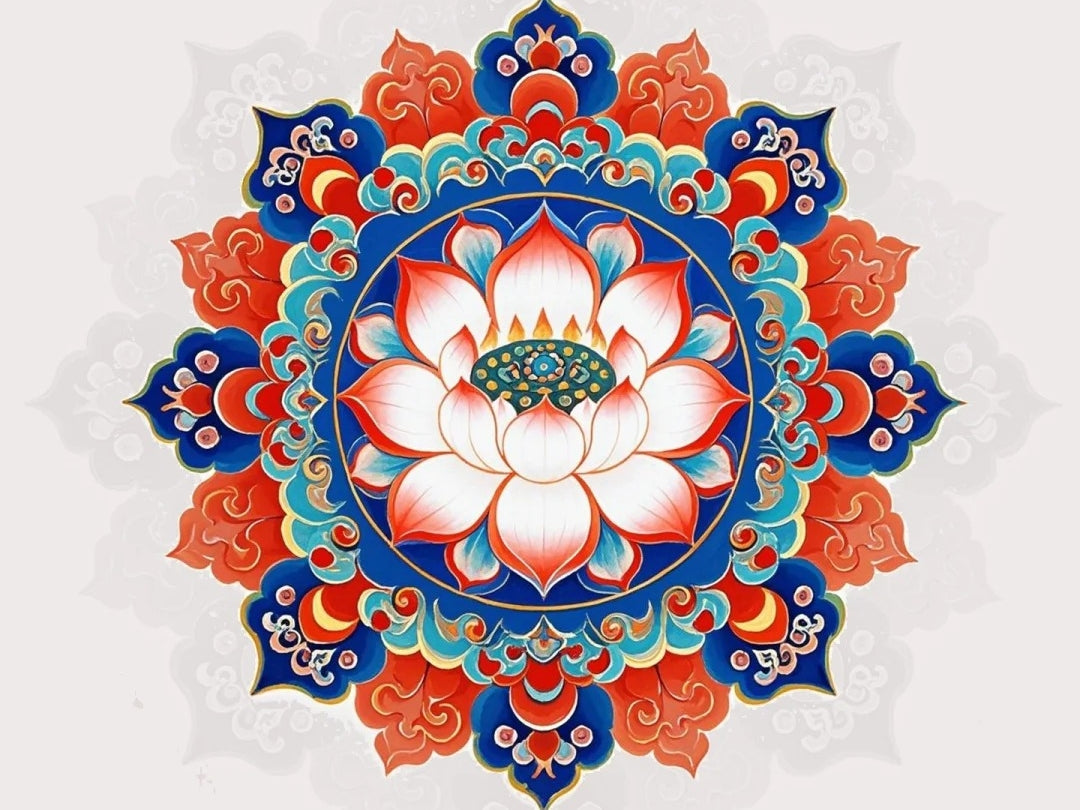Across many Eastern traditions, art is more than decoration—it is a visual language built through lines, symmetry, and sacred geometry. These ancient Eastern patterns weren’t created for beauty alone; they were designed to guide the mind, support emotional balance, and reflect the deeper architecture of the universe.
At a time when many people are looking for grounding and meaning, the wisdom behind these geometric forms feels surprisingly modern. Their quiet order brings a sense of energy harmony, creating a space where the mind can soften and the spirit can refocus.
Mandala Structures: A Map of Inner Peace
The mandala is perhaps the most recognizable expression of sacred geometry. Built from concentric circles, balanced quadrants, and repeating motifs, mandalas were originally used as tools for meditation and visualization. Their symmetry helps the mind settle, making it easier to return to a centered state.
In many traditions, a mandala represents the relationship between the inner and outer world—the idea that peace begins within, then radiates outward. For modern viewers, the meaning hasn’t changed. The simplicity of the mandala’s geometry encourages calm, clarity, and presence.
This is why many people still seek out mandala meanings as part of their spiritual practice. Even without formal training, simply gazing at a mandala can slow the breath and help restore focus.

The Swirling Wan Pattern: Cycles, Continuity, and Infinite Flow
The wan symbol—sometimes seen as a swirling cross or repeating knot—appears widely in East Asian art and Buddhist imagery. Unlike the distorted version misused in the West, the traditional wan pattern symbolizes auspiciousness, infinite continuity, and the unbroken flow of wisdom.
From a geometric perspective, the repeating angles and rotations create a gentle visual rhythm. This rhythm can ease mental tension in the same way that breathing exercises or mantra repetition do. Many artisans use the wan motif to invoke blessings or to remind the viewer of life’s ever-unfolding nature.

The Eight Auspicious Symbols: Geometry with Purpose
The Eight Auspicious Symbols—lotus, conch, endless knot, dharma wheel, victory banner, parasol, treasure vase, and golden fish—each carry spiritual meaning. Yet their geometric structure is often overlooked.
-
The endless knot’s interlaced loops represent harmony and interconnectedness.
-
The dharma wheel, built upon radial symmetry, reflects the balance between action and understanding.
-
The lotus unfolds in layered petals that echo natural fractals.
These shapes aren’t accidental. They embody the principle that visual order can shape emotional balance. When people feel drawn to these motifs, they often sense the calm held within their structure long before they understand their symbolism.
How Geometry Influences Mood and Focus
Ancient practitioners believed that geometric patterns could influence the mind’s state—and today, psychologists and designers say much the same. Symmetry naturally soothes the nervous system. Repetition anchors attention. Balanced proportions create a sense of trust and stability.
This is why sacred geometry has remained a part of spiritual art for centuries:
-
It encourages mindfulness without demanding effort.
-
It helps create environments where the mind feels safe to relax.
-
It acts as a quiet companion during meditation or reflection.
Even in everyday life, many people keep geometric talismans, mandala ornaments, or symbolic jewelry close as a way to carry a sense of order and protection wherever they go.
The Spiritual Logic Behind the Patterns
While these designs differ across regions and eras, they share a common purpose: to reflect the larger harmony of the universe. In Eastern philosophy, beauty and meaning are inseparable. A pattern is not merely pleasing—it is intentional, symbolic, and deeply connected to the natural and spiritual world.
Understanding this logic adds a new dimension to how we look at art. These patterns are reminders that life, even in its complexity, moves through an underlying order. And when we align with that order—through meditation, through beauty, or simply through awareness—we feel more balanced, grounded, and whole.
A Quiet Invitation to See with New Eyes
Sacred geometry invites us to slow down and notice the intelligence woven into each line and curve. It encourages us to appreciate how ancient artisans used geometry as a bridge between art and spirituality.
Whether you’re exploring mandalas, the wan symbol, or the Eight Auspicious motifs, these patterns offer more than visual beauty. They offer a way to reconnect with stillness, wisdom, and the subtle harmony that shapes our world.




